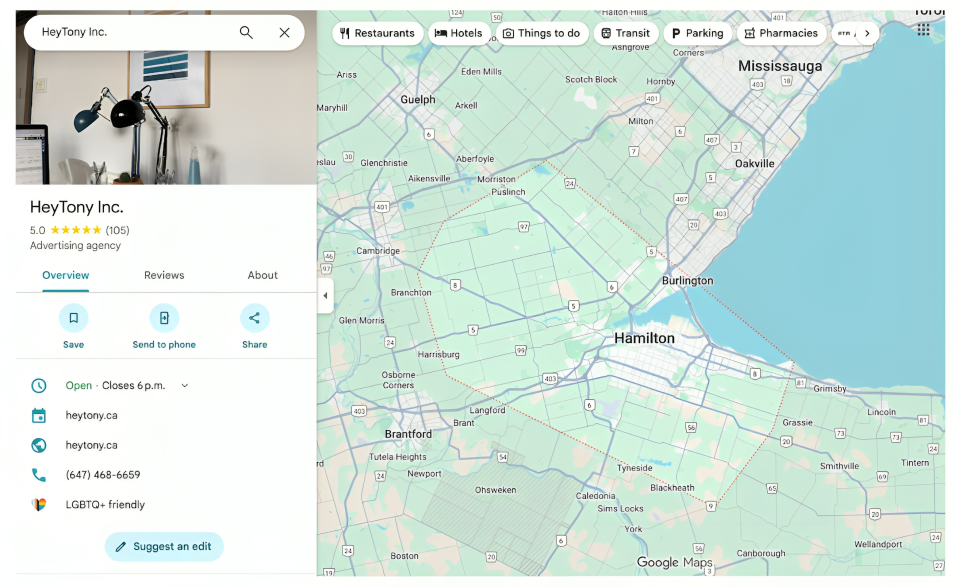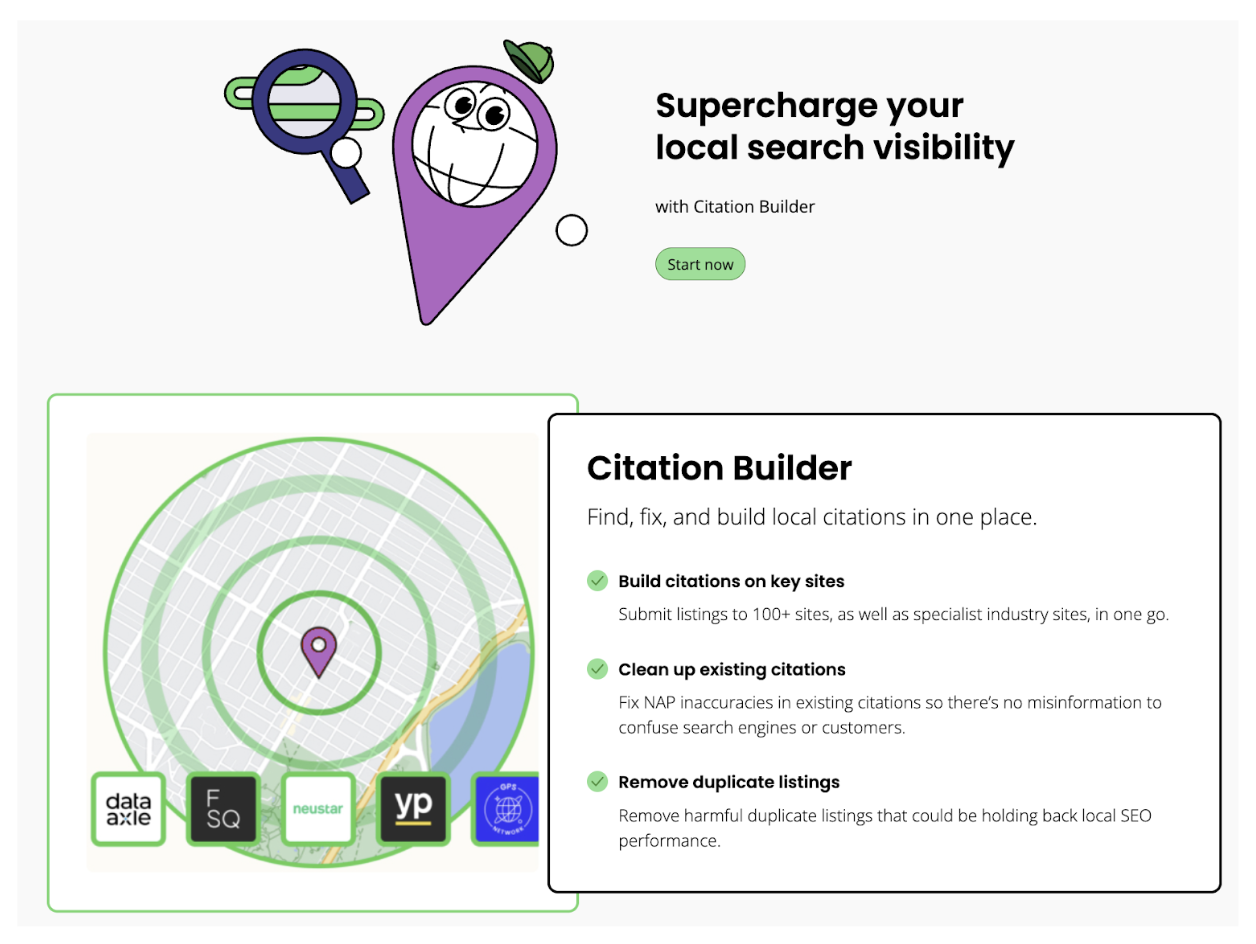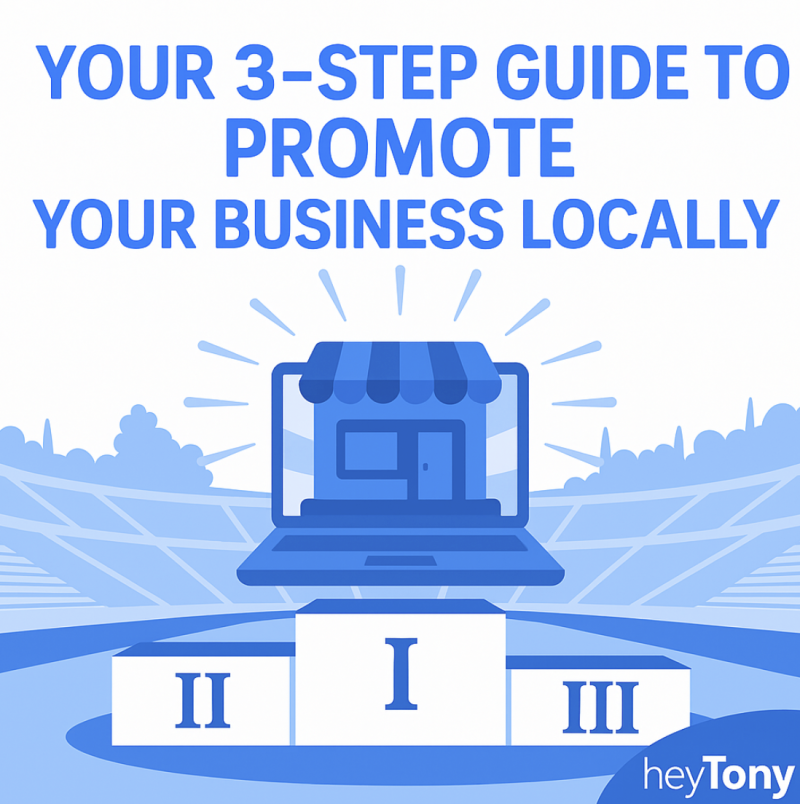TL:DR Guide
- Step 1: Optimise your Google Business Profile for better visibility.
- Step 2: Improve Local SEO to attract nearby customers.
- Step 3: Build citations for consistency and credibility across all platforms.
Managing a business can be tough in today’s day and age but if you’re trying to promote your business locally we have a simple, actionable plan that will help you get the best results for your business. When starting to decide how to promote your business it is important to know how your customers are finding your business, that is very likely through searches. Whether they’re browsing Google, reading reviews, or exploring directories like Yelp, your visibility makes all the difference. This 3-step guide will walk you through optimising your online presence to stand out in your community and attract more local customers to help promote your business locally online.
Step 1: Promote Your Business through Google Business Profile Optimisation

Your Google Business Profile (GBP) is often the first impression potential customers have of your business. A well-optimized Google profile is one of the most effective ways to promote your business locally, boosting your chances of appearing in Google Maps and local search results. Using the right SEO tools can help make the optimisation process easier and more effective.
Start by claiming and verifying your profile. This step confirms ownership with Google and gives you full control to manage and edit your listing. Think of your GBP as your digital storefront, it shows customers when you’re open, where you’re located, and how they can reach you. Keeping this information accurate and up to date is essential.
Related: 3-Step Guide to Google Business Profile Optimization
Next, add photos and videos that highlight your products, services, or location. Visual content helps promote your business by making it more engaging and trustworthy. Google also considers how frequently your profile is updated, so make it a habit to review and refresh your listing often.
You can also use the Posts feature to share announcements, promotions, or events directly on your profile. This helps keep your audience informed while signalling to Google that your business is active.
Lastly, respond to customer reviews! Google reviews help your SEO because replying not only builds credibility and trust but also shows potential customers that you value feedback, an important factor in how people decide where to shop or book services.
Step 2: Local SEO Can Help Promote Your Business Organically

Local SEO helps promote your business’s website by ensuring it appears when nearby customers search for your products or services. It’s all about targeting the right keywords and creating content that resonates with your community.
The first step is to use location-specific keywords such as “best café in Windsor” or “SEO agency in Hamilton.” These keywords should be included on key pages of your website, especially your homepage and service pages, to make it clear to Google (and customers) where you operate. If you’re wondering how many keywords should I use for SEO, the answer is to focus on quality and relevance rather than stuffing, ensuring each keyword fits naturally into your content.
To further increase local relevance, create blog posts, landing pages, or location-specific pages that highlight local events, neighbourhoods, or services. For example, a café could write a blog post about the best seasonal drinks in Windsor, or a plumber might create a landing page for emergency services in a specific neighbourhood. This type of content shows search engines that your business is an active part of the local community, helping to promote your business locally.
Related: Content Writing Tips
Finally, make sure your Name, Address, and Phone number (NAP) are displayed clearly, ideally in the footer of your website. This consistency builds trust with both customers and search engines, increasing your chances of ranking higher in local results.
Step 3: Citation Building – Promote Your Business for Greater Visibility

What citations are (and why they matter)
Your Google Business Profile (GBP) is often the first impression potential customers have of your business. A well-optimised Google profile is one of the most effective ways to promote your business locally, as it boosts your chances of appearing in Google Maps and local search results. The importance of accurate NAP information for local SEO also plays a key role, helping search engines verify your business details and improving visibility. There are tons of free tools that can help make the optimisation process easier.
Step-by-Step: How to Build Citations
- Set your “source of truth.”
Start with your Google Business Profile and your website. Choose a single, canonical NAP format (exact business name, address formatting, phone number) and stick to it everywhere. - Fix your website first.
Ensure your NAP (and website URL) is accurate and visible—ideally in the footer and on your contact page. - Create core listings.
Claim or create listings on the high-authority platforms first: Apple Maps, Bing Places, Yelp, Facebook, Yellow Pages, plus your local Chamber of Commerce and relevant industry-specific directories. - Expand to niche + local.
Add reputable industry directories (e.g., trade associations) and local directories (neighbourhood guides, local business hubs). - Complete every profile.
Add categories, a well-written description, opening hours, photos, services, and your website. More complete profiles are more likely to rank—and promote your business effectively. - Eliminate duplicates.
Find and remove or merge duplicate/incorrect listings. Conflicting data can hurt trust and rankings. - Track and maintain.
Keep a simple tracker (sheet) with login details, listing URLs, and status. Revisit quarterly to update hours, photos, and services.
Manual vs. Using a Citation Service
- Manual submission
- Pros: Maximum control and quality; you can tailor each listing.
- Cons: Time-intensive, especially for duplicates and verifications.
- Citation tools/aggregators (e.g., BrightLocal, Yext, Uberall)
- Pros: Faster scale, ongoing sync, error detection.
- Cons: Subscription cost; you still need clear goals and to review accuracy.
Tip: Decide where you specifically want to appear (e.g., Apple Maps, Yelp) before choosing manual vs. tool-based. Align budget with impact.
Related: The Best Listing Management Tools
Best-Practice Tips for Citations
- Keep NAP 100% consistent (spacing, abbreviations, suite numbers, and phone format).
- Prioritise reputable directories over low-quality sites. Quality beats quantity.
- Match categories across listings to reinforce relevance.
- Use high-quality photos and a concise, benefit-led description.
- Add UTM tags to your website links so you can track referral traffic in analytics.
- Monitor reviews on major directories and respond—this builds credibility and further helps promote your business.
Conclusion
To successfully promote your business locally, start with a strong Google Business Profile, then strengthen your reach with local SEO, and finally build credibility with consistent citations. By following these three steps, you’ll not only increase your visibility but also make it easier for local customers to find and trust your business. For more tips follow Hey Tony’s Instagram our follow our blog for more tips!
Originally published . Last updated .
Categories:
Explore More


